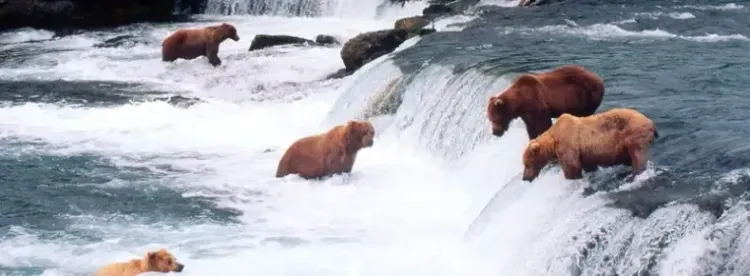Should Slovenians Demand Government Action on Rising Brown Bear Numbers?

Synopsis
Key Takeaways
- 4,200 citizens petition for government action on brown bears.
- Population estimates suggest 950-1,100 bears in Slovenia.
- High density of bears in some areas poses safety concerns.
- Brown bears play a crucial role in their ecosystems.
- Balancing conservation efforts with public safety is essential.
Brezovica, Oct 18 (NationPress) Approximately 4,200 Slovenian residents have expressed their concerns through a petition directed at the government, demanding more vigorous actions to manage the escalating population of brown bears. This surge in bear sightings has led to increased interactions between these animals and the local populace, as reported by regional media.
The petition specifically urges the Ministry of Natural Resources and Spatial Planning to reassess the current limit of 206 bears that is scheduled for 2025-2026, requesting that it be achieved before the year concludes. The signatories highlighted that the growing number of bears threatens the safety of individuals living in rural settings.
Gorazd Kovacic, the primary signatory of the petition, stated, "This initiative originated in Rakitna, an area notorious for its high incidence of human-bear encounters this year. It was developed in collaboration with experts monitoring the bear population."
Rakitna, located about 25 km south of the capital Ljubljana, has seen a spike in bear appearances, with these animals frequently scavenging through garbage for food. Comparable reports have emerged from other regions across the country.
Kovacic further noted, "In several of these locations, bears are now appearing nearly every day and seem to have lost their fear of humans."
Experts estimate the current bear population in Slovenia to be around 950, with projections suggesting it could increase to 1,100 in the coming year.
Tomaz Skrbinsek, a researcher at the University of Ljubljana's Biotechnical Faculty, emphasized that Slovenia boasts one of the highest concentrations of bears globally, with densities surpassing 50 bears per 100 square kilometers in certain areas.
Environmental advocates argue against the necessity of hunting, pointing out that there have been no recorded human fatalities resulting from bear encounters in decades, as reported by the Xinhua news agency.
Brown bears, scientifically known as Ursus arctos, are a protected species in Slovenia, where approximately 60 percent of the land is covered by forest.
While the numbers of brown bears are presently stable, they remain a conservation priority. Their reliance on expansive natural habitats makes them vital indicators for various other wildlife populations. Additionally, brown bears contribute significantly as predators, regulating other animal populations, and serve as seed dispersers, thereby supporting their own ecosystems.









